8 Sustainable & Eco-Friendly Appliances To Cook, Cool, & Clean Consciously
It’s hard to imagine a time without the convenience of labor-saving home appliances.
But while there have been many brilliant innovations over the years, we still have a long way to go from a sustainability standpoint.
Enter: eco-friendly home appliances. But what is an eco-friendly appliance exactly?
Most “green” appliances focus on energy efficiency. While choosing energy efficient-appliances is an important way to reduce your carbon footprint at home (and lower those energy bills), the majority of appliance brands have yet to consider the broader elements—and we’re not talking about the heating element in your oven.
We’re talking about ethics in the supply chain, toxic chemicals used in manufacturing, and what happens to that washing machine after its days of washing are over.
Our eco-friendly appliances list includes the most sustainable appliances we could find.
It’s worth noting, however, that when compared to the best sustainable clothing brands or ethical beauty brands, appliance manufacturers are still a long way off from being remotely sustainable.
Everything we recommend to you on Sustainable Jungle is independently researched and we ask all brands to confirm their claims. To avoid waste, we test products on an as needed basis. This post contains affiliate links. If you buy something through our links, we may earn a small commission. Learn more about why we do this here.
The Top Eco-friendly Home Appliances For A Green Living Set-Up
Dualit keeps it green with its range of eco-friendly kitchen appliances for kitchens and families of all shapes and sizes.
On the way to becoming carbon-neutral, Miele designs its green kitchen appliances for easy repair and recycling.
Now that we’re done preheating you for the brands to come, let’s bake, spin, and toast our way through these eco-friendly electrical appliances.
To find out more about how we chose these eco appliances, pop down to the end of the article.
The Full List Of Sustainable Appliances For The Home
- Miele | Visit Store
- SMEG | Visit Store
- Dualit | Visit Store
- Beko | Visit Store
- Bosch | Visit Store
- Sodastream | Visit Store
- LG | Visit Store
- Sub-Zero, Wolf, and Cove | Visit Store
1. Miele
About Miele
Price Range: $1,299–$17,599
Family-owned Miele aims to achieve carbon neutrality by 2050 at the latest.
They’re already carbon-neutral across all of their locations (referring to the greenhouse gas emissions from their own production processes) and are working to address the carbon footprint of their entire value chain.
Their selection includes some of the best eco-friendly washers and dryers, along with dishwashers, that meet the highest energy-efficient A+++ category (hello, cheaper energy bills) with an increasing number of energy-efficient refrigerators and freezers falling into that category, too.
You can expect a 20-year service life from anything on their list of eco-friendly home appliances—which includes laundry appliances, dishwashers, vacuum cleaners, ovens, hobs, refrigerators, wine coolers, freezers, and coffee maker systems.
Miele’s Ethical & Sustainability Practices
As per their most recent Sustainability Report, Miele addresses the entire life cycle of its products, from product development to recycling and disposal.
They’ve been successful in reducing energy consumption by up to 72% for some of their high energy-efficient products (tumble dryers and washing machines).
To close the loop, Miele appliances are designed with easy recyclability in mind. In some cases, 100% of the metals can be recycled.
All of Miele’s manufacturing partners are SA8000-certified, meaning no forced/child labor or discrimination. Many factory workers are paid above minimum wages to meet the local cost of living.
2. SMEG
About SMEG
Price Range: $100–$18,160
With a range of awards under their belt, this Italian eco-friendly house appliances manufacturer prides itself on durable consumer goods that offer both style and functionality.
SMEG’s selection includes eco cookers, ovens, hobs, eco kettles, dishwashers, eco-friendly laundry appliances, refrigerators, and freezers.
If you’re looking for a (mostly) plastic-free coffee maker, SMEG offers some beauties—especially if you dig the retro aesthetic.
Both their Drip Filter Coffee Machine and Manual Espresso Coffee Machine are mostly made from stainless steel and come in a quirky choice of colors (pale pink or mint green, anyone?)
SMEG’s Ethical & Sustainability Practices
SMEG’s sustainable kitchen appliances combine high performance with low consumption. Many of their energy-efficient models meet the highest energy efficiency class rating.
Materials like glass, steel, brass, and aluminum are prioritized because they’re easy to recycle.
Smeg also complies with the EU RoHS and REACH standards, which restrict the use of hazardous materials and chemicals in manufacturing.
Their Italian headquarters won an award for its innovative bio-architecture.
3. Dualit
About Dualit
Price Range: $120–$370
Dualit’s range include kettles, toasters, coffee machines and a collection of appliances for food prep.
You can make green(er) tea with their stainless steel electric kettle options, which combine durable product design with modern features.
The Classic Kettle has a 1.7 liter capacity, a replaceable 3KW heating element, a removable, washable filter, and two measuring windows (cups and milliliters) so you can fill with just the right amount of water—helping you use less energy while heating water for your zero waste tea.
Dualit’s Ethical & Sustainability Practices
From industrially compostable coffee capsules and sustainable packaging to repairable kettles and eco-friendly toasters, Dualit puts the environment at the forefront of their sustainable kitchen products‘ design.
Prioritizing ethical sourcing, nearly all of their coffee capsules are Fairtrade certified.
4. Beko
About Beko
Price Range: $669–$3,848
We Beko-n your attention to this next maker of sustainable household appliances.
Beko provides eco-friendly alternatives for refrigerators, freezers, laundry machines, dryers, dishwashers, kitchen stoves, air conditioners, microwaves, ovens, countertop appliances, and appliances for the office and entertainment.
If you’re looking for an eco-friendly fridge, the BioFridge™ Fridge Freezer features parts made from sugar cane, eggshell waste, and soya oil.
Similarly, they incorporate recycled fishing nets into each sustainable oven and recycled plastic bottles in the drums of their eco-friendly washing machines.
Beko also developed the first washing machine that has a built-in filtration system to capture microplastics (which pollute the planet every time we wash our synthetic fabrics)—now THAT’S what it means to make the best eco-friendly washer and dryer.
Beko’s Ethical & Sustainability Practices
In the past year, Beko reported an energy savings of 34% for their products, and reduced water withdrawal by 31%.
They’ve upped their waste recycling rate by a whopping 97% thanks to some of the eco appliances mentioned above.
Beko has also worked with the first recycling company capable of capturing ozone-depleting chlorofluorocarbon (CFC) gasses from old refrigerators.
As for ethics, see their statement on modern slavery and their gender pay gap report.
Beko has partnered with the World Health Organization to provide African villages with sustainable energy appliances, namely solar refrigerators.
5. Bosch
About Bosch
Price Range: $500–$9,900
Bosch has been one of the biggest companies for automotive, electrical, and industrial components for over 120 years.
Most of us know them for their eco-friendly and energy saving appliances for the kitchen.
The company’s environmentally friendly appliances include ENERGY STAR certified and eco-friendly stoves, refrigerators, dishwashers, mixers, wall ovens, washers, and dryers.
Bosch’s Ethical & Sustainability Practices
In 2020, Bosch (and its 400 global locations) became climate neutral. They have been the ENERGY STAR Partner of the Year for the past two years.
By 2025, they hope to reach targets for increasing renewable energy use, reducing water withdrawal, improving wastewater flows, improving social impacts, and establishing a circular economy.
Bosch is actively taking steps to improve conditions in its supply chain (particularly with raw material extraction).
The Bosch Community Fund supports science, technology, engineering, math (STEM) education and environmental sustainability initiatives.
6. Sodastream
About SodaStream
Price Range: $100–$195
SodaStream wants to turn La Croix addicts into eco-friendly drinkers.
It may have carbon in the name, but carbonation doesn’t have to mean a higher carbon footprint.
Their environmentally friendly kitchen appliances consist of sparkling water makers that help replace single-use bottles and cans.
With their reusable glass or BPA-free plastic bottles, you can make your own sodas and seltzers—saving a family up to 3,000 disposable bottles every year.
SodaStream’s Ethical & Sustainability Practices
With the purchase of their Art for Action Special Edition SodaStream carbonated water bottles, 10% of profits are donated to ocean conservation.
They’ve also committed to switching away from both plastic flavor bottles and virgin plastic appliances. Instead, they’re working towards sparkling water makers made from recycled or plant-based materials.
5% of the company’s energy comes from solar panels fitted on their factory roof and they’re working to increase this amount.
This also supports their parent company (PepsiCo—which admittedly still has a long way to go in terms of sustainability) in its efforts to use 100% renewables by 2030.
7. LG
About LG
Price Range: $159–$9,499
LG is a household name when it comes to appliances.
Their product line includes TVs, speakers, air conditioners, vacuums, refrigerators, dishwashers, washers, dryers, and eco-friendly small kitchen appliances that boast lower energy consumption.
LG’s Ethical & Sustainability Practices
LG’s sustainability commitments are based on 6 key initiatives: “better earth, better circularity, better eco-products, better workplace, better society, and better access”.
Since 2019, they’ve been increasing their number of ENERGY STAR-certified environmentally friendly household appliances and in 2020 alone, saved Americans $40 billion in energy costs.
By 2030, they hope to achieve carbon neutrality, reduce the greenhouse gas emissions of their major products by 20%, achieve a 95% recycling rate of waste from production, and gain ISO 45001 certification.
They do not source conflict minerals from the DRC or adjoining countries that benefit armed groups.
If you’re wondering how to dispose of electronics, they may have the answer to that, too. The LG Electronics Recycling Program promotes electronics recycling with more than 1,000 drop-off locations in the US.
8. Sub-Zero, Wolf, and Cove
About Sub-Zero, Wolf, and Cove
Price Range: $940–$20,390
Sub-Zero, Wolf, and Cove are refrigeration (Sub-Zero), cooking (Wolf), and dishwashing (Cove) specialists.
Sub Zero has been making environmentally friendly refrigerators for 90+ years. Products are manufactured in their own Wisconsin and Arizona facilities, designed to last for a minimum of 20 years, and backed with a lifetime of support.
Twenty years ago, Sub-Zero introduced Wolf eco cookers and more recently added Cove dishwashing to complete their line-up of eco-friendly kitchen appliances.
Sub-Zero, Wolf and Cove’s Ethical & Sustainability Practices
Sub-Zero, Wolf, and Cove aim “to be a leader in both food preservation and the preservation of our planet”.
What makes their refrigerator eco-friendly?
How about the fact that 75% of the stainless steel and 50% of the plastic used to make it is recycled? Or that the company produces no wastewater and recycles nearly 200,000 gallons of water per year?
100% of their scrap metal internal electronics are also recycled.
Several of their eco-friendly refrigerators and dishwashers have achieved an ENERGY STAR rating for energy efficiency.
They practice conflict-free raw material sourcing and choose ecologically and socially responsible suppliers to work with.
Employees are supported with an on-site health clinic, fitness center, and training opportunities.
Read more in their latest sustainability report.
Did you know we Have a Newsletter?
We cover the latest in sustainable living, fashion, zero waste, beauty, travel, finance and more…
Why Are Eco-Friendly Appliances Important?
Despite rapid advances in technology itself, progress toward making that technology sustainable has been, well, a little less rapid.
There are still many problems plaguing the vast majority of technology—and that includes appliances.
Environmental concerns
Environmental concerns are relevant at every stage of an appliance’s lifecycle—from raw material sourcing to their end-of-life fate.
The main materials in most household appliances fall into two categories (both of which have environmental concerns): metal and plastic.
Even the most eco-friendly appliances require mining.
In the EU alone, it’s estimated that appliance production requires a whopping 6 million tons of raw materials—3 million tons of stainless steel and 1.1 million tons of plastic.
Not only do the materials require fossil fuels which leads to mining complications like erosion, deforestation, sinkholes, contaminated water, and worker harm, but then they’re often transformed into appliances in an equally damaging way.
While some appliance manufacturers use clean energy, much of the industry’s production is made possible with significant amounts of gas, coal, or oil.
Manufacturing also requires tremendous volumes of water. Toxic wastewater laden has to be disposed of, as do the appliances when they are no longer functional or wanted.
The average American household gets rid of 44 pounds of electronic waste every year. Much of this ends up in landfills, releasing harmful chemicals while it slowly breaks down (and some components will never break down).
Our recycling rates are getting better—roughly 60% for all metals in appliances in the US—but we’re still sending about half directly to landfills.
Ethical concerns
Like many other industries, there are several human rights concerns that come with appliances.
Between the high levels of child labor involved in cobalt mining, to the fact that just ten appliance companies account for around 66% of the world’s electronics—there’s plenty of room for improvement.
Unfortunately, even our list of eco-friendly appliances is tarnished by some of these concerns.
Nearly every one of these brands had reported ethical issues—ranging from tax avoidance for Beko’s parent company to concerns of forced labor for both Bosch and LG.
How We Found The Most Sustainable & Eco-Friendly Appliances
So, how do you make appliances eco-friendly?
As per a slow tech diet, we referred to our handy guide on sustainable technology for the key considerations.
Materials:
The most environmentally friendly appliances are made from recycled and easy-to-recycle materials (such as glass, steel, brass, and aluminum).
We also look for non-toxic materials and minimal plastic content (and ideally recycled plastic at that).
- Certifications: Restriction of Hazardous Substances in Electrical and Electronic Equipment (RoHS), Registration, Evaluation, Authorisation, and Restriction of Chemicals (REACH), ENERGY STAR
Supply chain and labor practices:
Transparency is key. Companies need to be able to map their complex supply chains to understand what conditions are provided.
We look for brands committed to improving conditions during raw material sourcing, pay living wages, and use certifications or audits to ensure their supply chains are free of forced/child labor.
- Certifications: Social Accountability International (SA8000), ISO 9001, ISO 14001, ISO 45001
Green business practices:
Designing energy-efficient appliances is important, but carbon offset programs that allow for climate neutrality, renewable energy use, and water and waste recycling also indicate that a company puts the planet first.
We look for high-quality, durable products and circular economy (AKA zero waste) practices.
How To Find Eco-Friendly Appliances For Your House
Aside from using our criteria above, how else can you assess the sustainability of the ENERGY STAR appliances you’ve been eyeing?
Here are some tips for the next time you go appliance shopping:
- Second-hand appliances: Second-hand is the best option unless the old appliances are very dated, as they may be worse for the environment. An old refrigerator, for instance, may use three times as much energy as a newer energy-efficient model.
- Energy efficiency: If everyone in the U.S. were to switch to energy-efficient appliances, the equivalent of 23 million cars worth of greenhouse gasses would be avoided. When new appliances save energy, they cut down on utility bills, too! Fortunately, looking for high-efficiency appliances is easy.
- The EnergyGuide label will show the annual energy consumption and operating cost for the appliance.
- The ENERGY STAR label will be found on all products that meet specific energy efficiency standards.
- Smart appliances can be connected to home energy management systems or smart electric meters to use electricity more efficiently during off-peak hours.
- In the EU, individual classes use the letters A to G, with A being the most energy-efficient. The more plus (+) signs, the more energy-efficient the appliance. A+++ appliances are 48% more energy-efficient than A+ appliances.
- Quality and longevity: Has the product been designed to last? Is it made from quality materials? Even better, does it come with a warranty or options for easy repair/part replacement?
- End-of-life policies: Even a new, well-built appliance will eventually reach the end of its life. What happens then? Has the manufacturer considered the recyclability of its materials? Do they have a program to collect and properly recycle the appliance? Does the appliance contain toxic materials that will wreak havoc in a landfill?
Final Thoughts On Eco-Friendly Appliances
We’re surrounded by appliances all the time, most of which are produced by multi-billion dollar companies that haven’t received as much consumer pressure as other industries, like ethical jewelry and sustainable beauty.
If you’re in the market for a new appliance—whether its something as big as an oven or small eco-friendly bathroom appliances (eco-friendly electric toothbrushes, anyone?)—reach out to ask your favorite companies about what they’re trying to do better.
But don’t let that shiny stainless steel or retro design get you! Only buy a new appliance when necessary and try to find a second-hand one first.
We all use appliances to make modern life easier, so share this article with friends and family to help spread the word about the most eco-friendly appliances (and keep their energy bill down!).
Pin these:
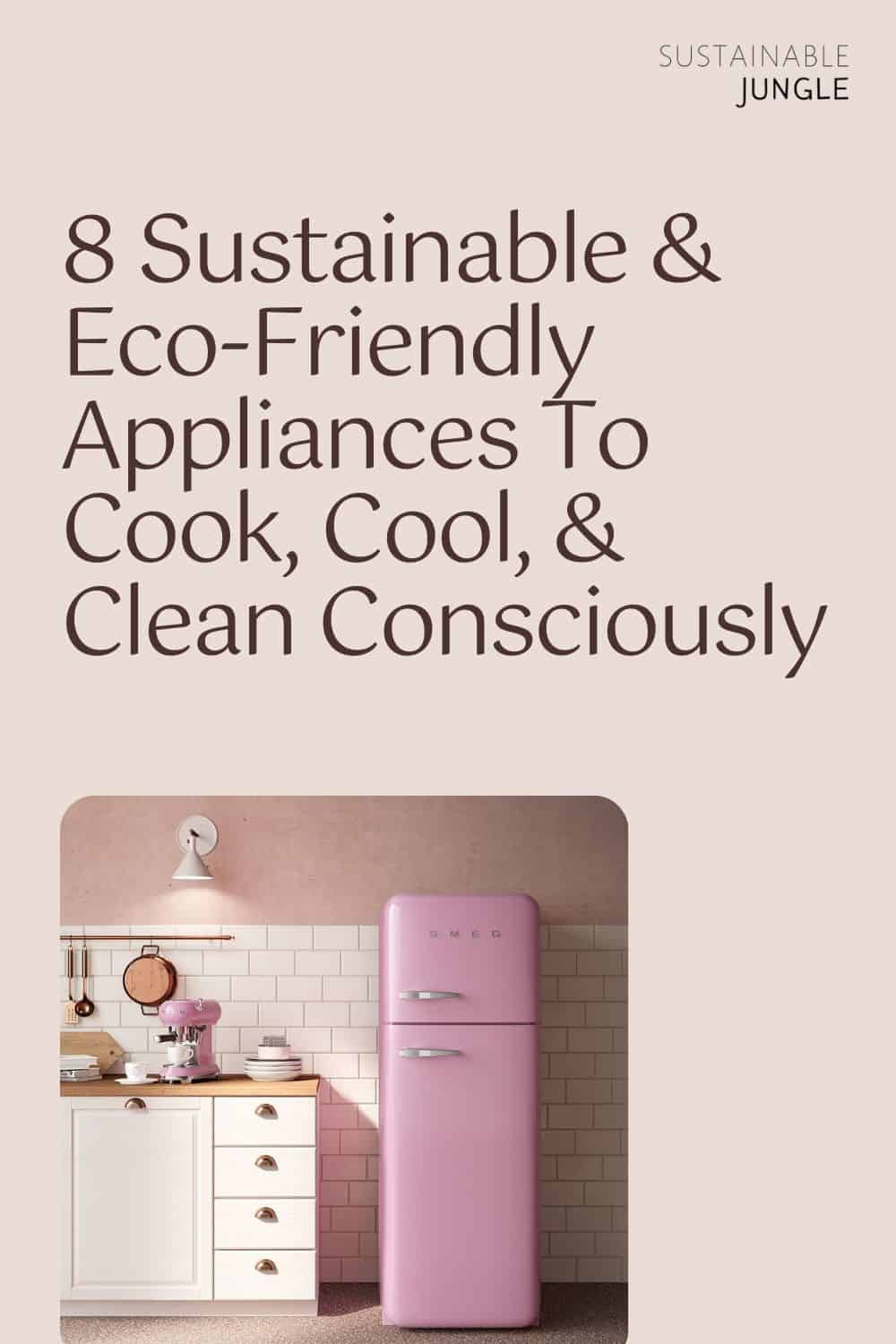
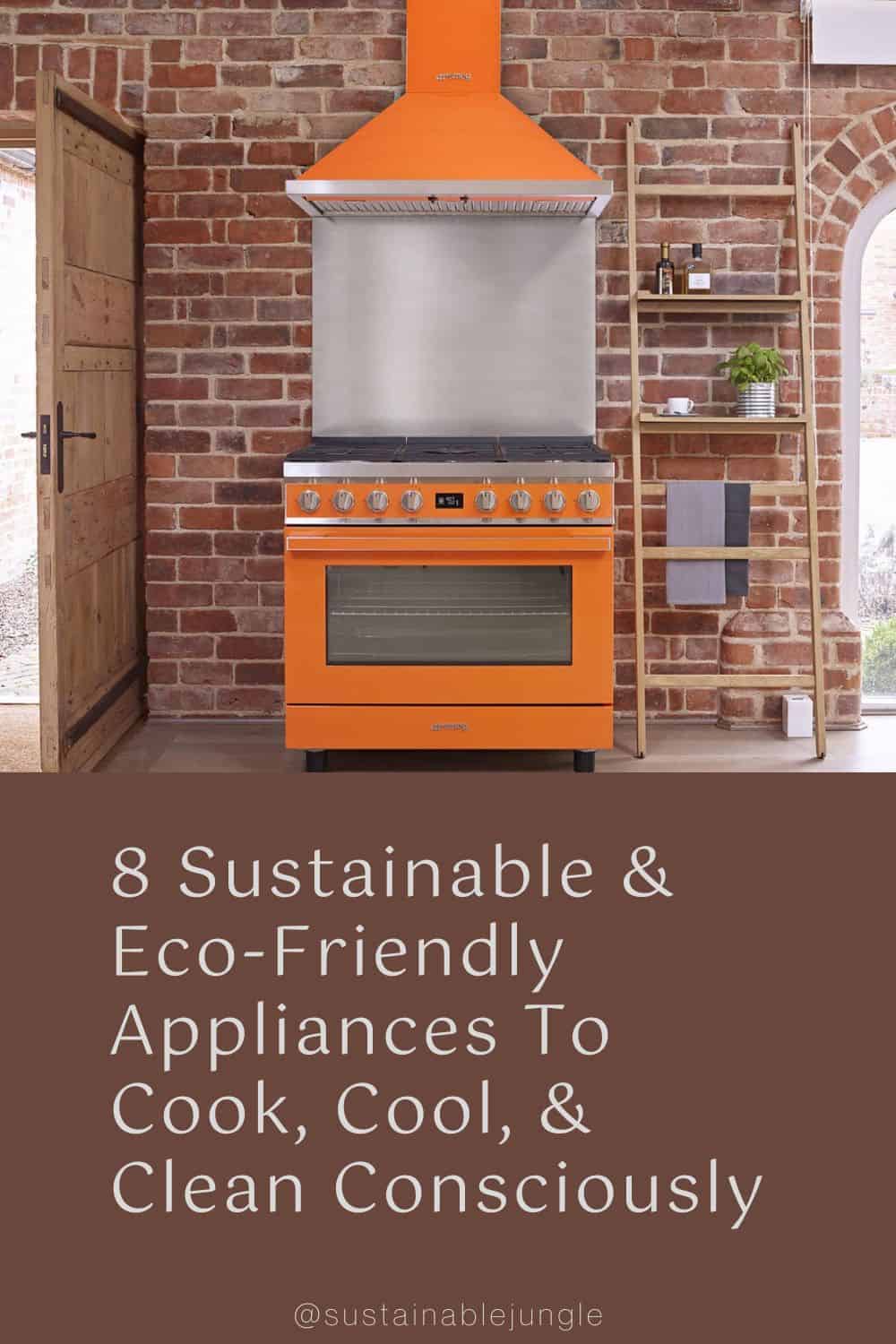

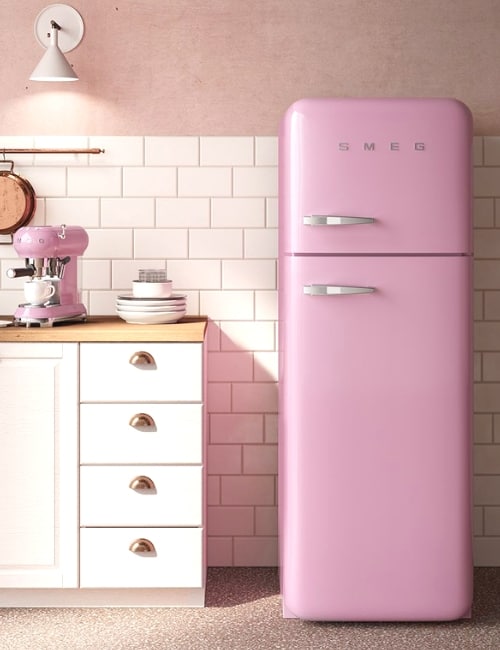
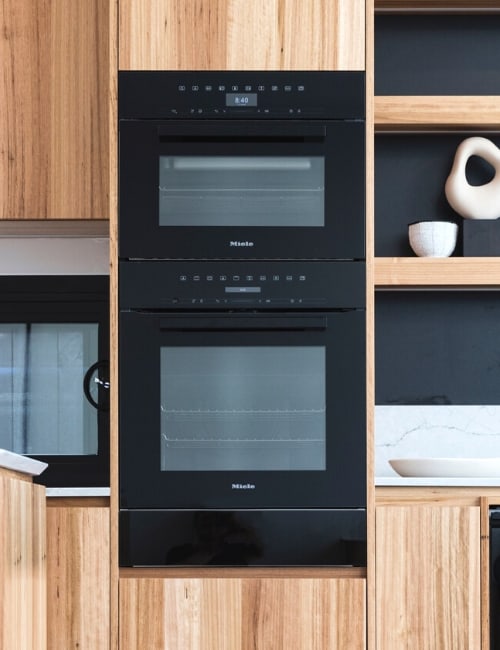
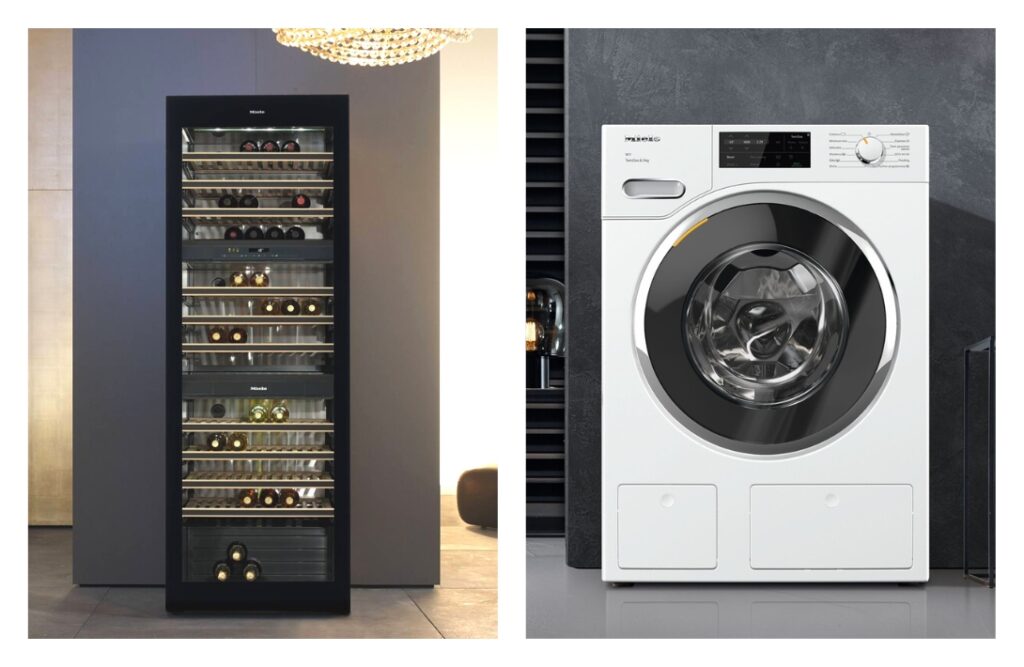
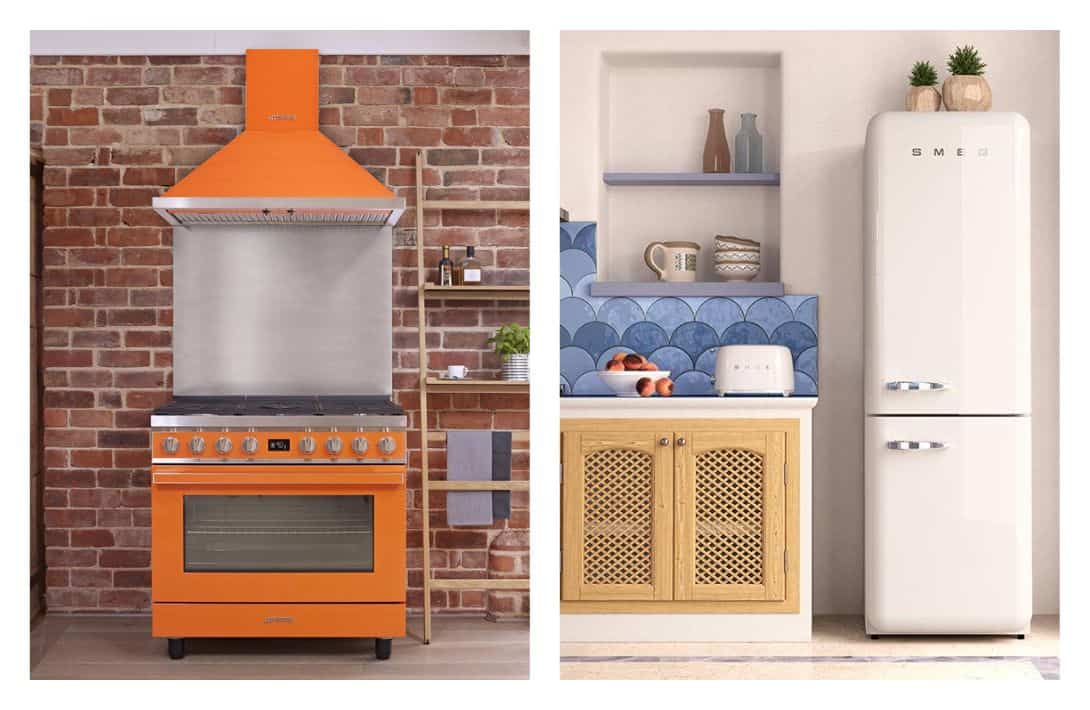
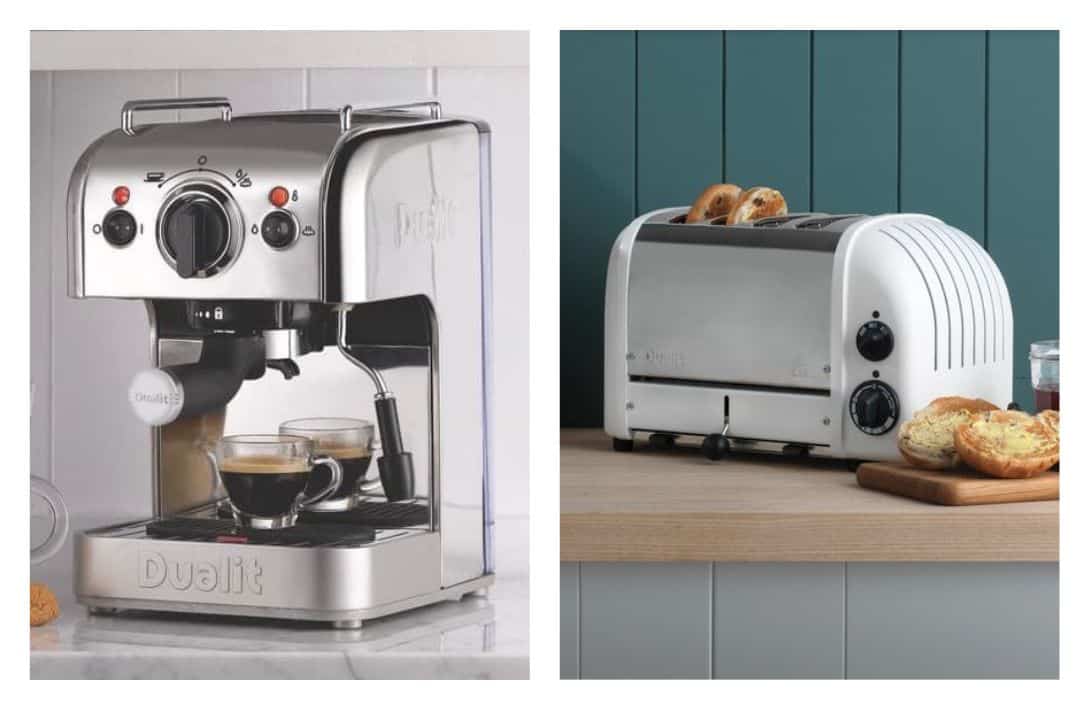
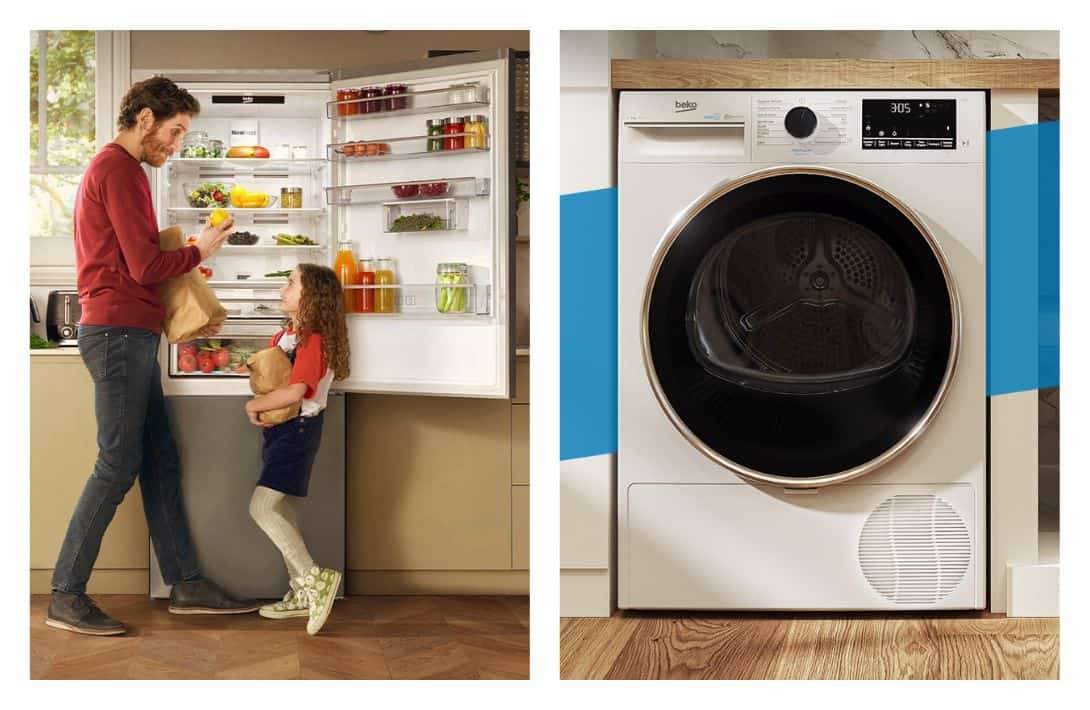
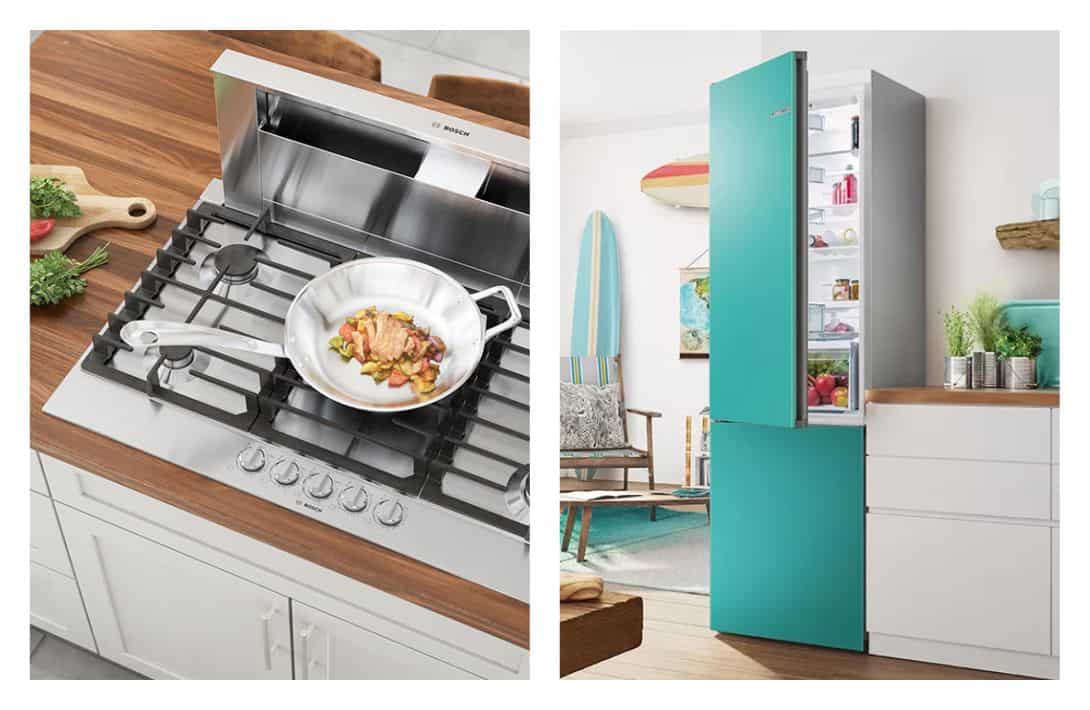
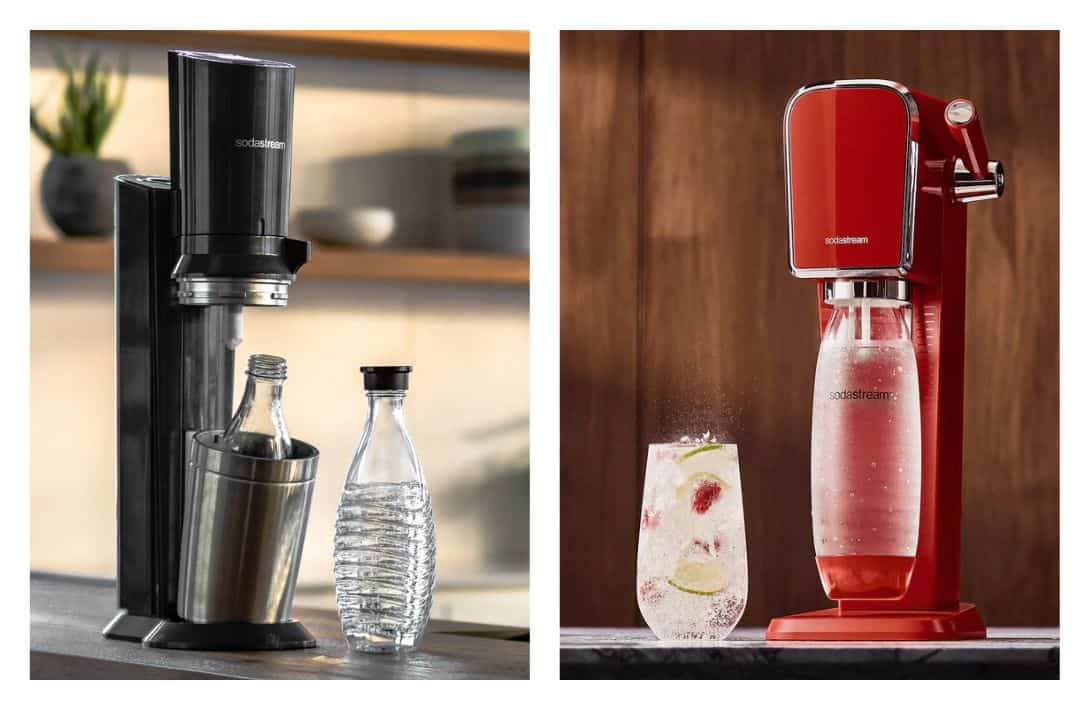
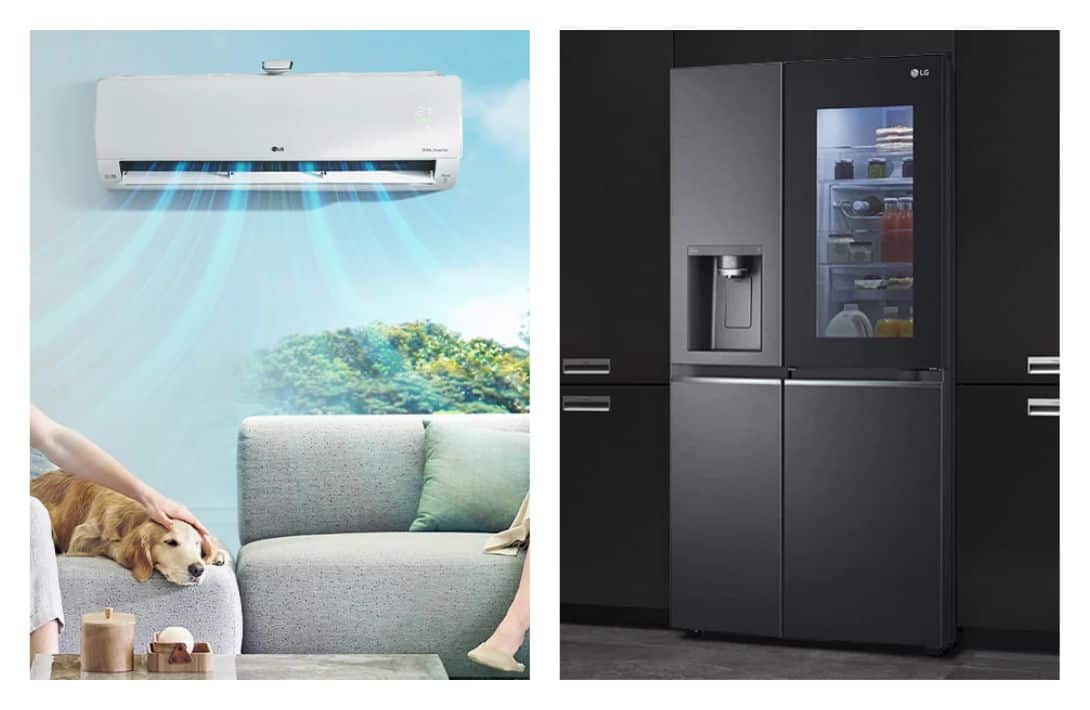
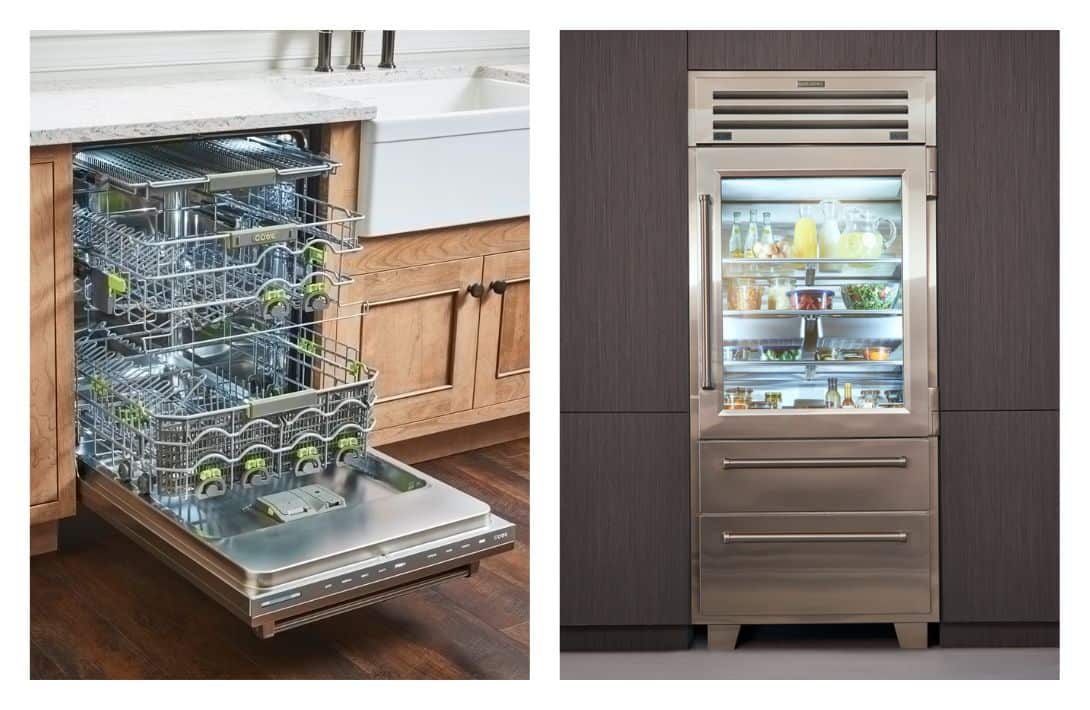
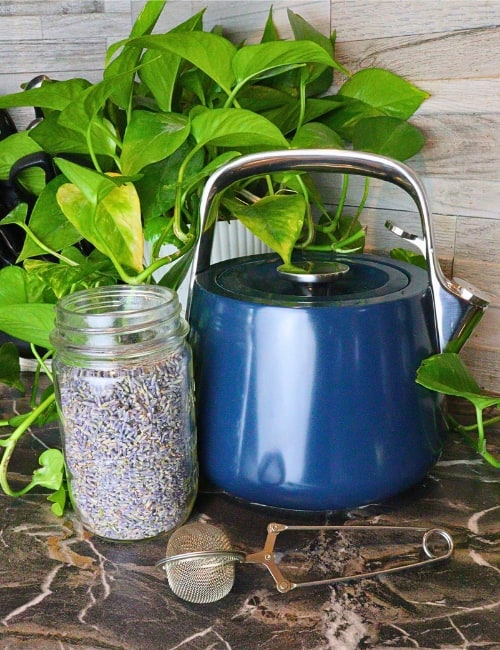


Hi there,
Thank you for this post. I was curious to see that you didn’t include companies that are close to (or have reached) a net zero carbon footprint. It’s great when companies have compostable products, but that doesn’t necessarily speak to a tangible, net affect on the environment.
Hey Oz, this is great feedback and a lot of our readers have been asking for this information in a recent survey we did. It seems the consumer focus (and our own) is shifting towards the bigger picture. We’re going to start actively talking about carbon commitments and achievements in our content going forward. And we will update this article to reflect this important consideration on the next round of updates. Thanks so much for taking the time to comment.